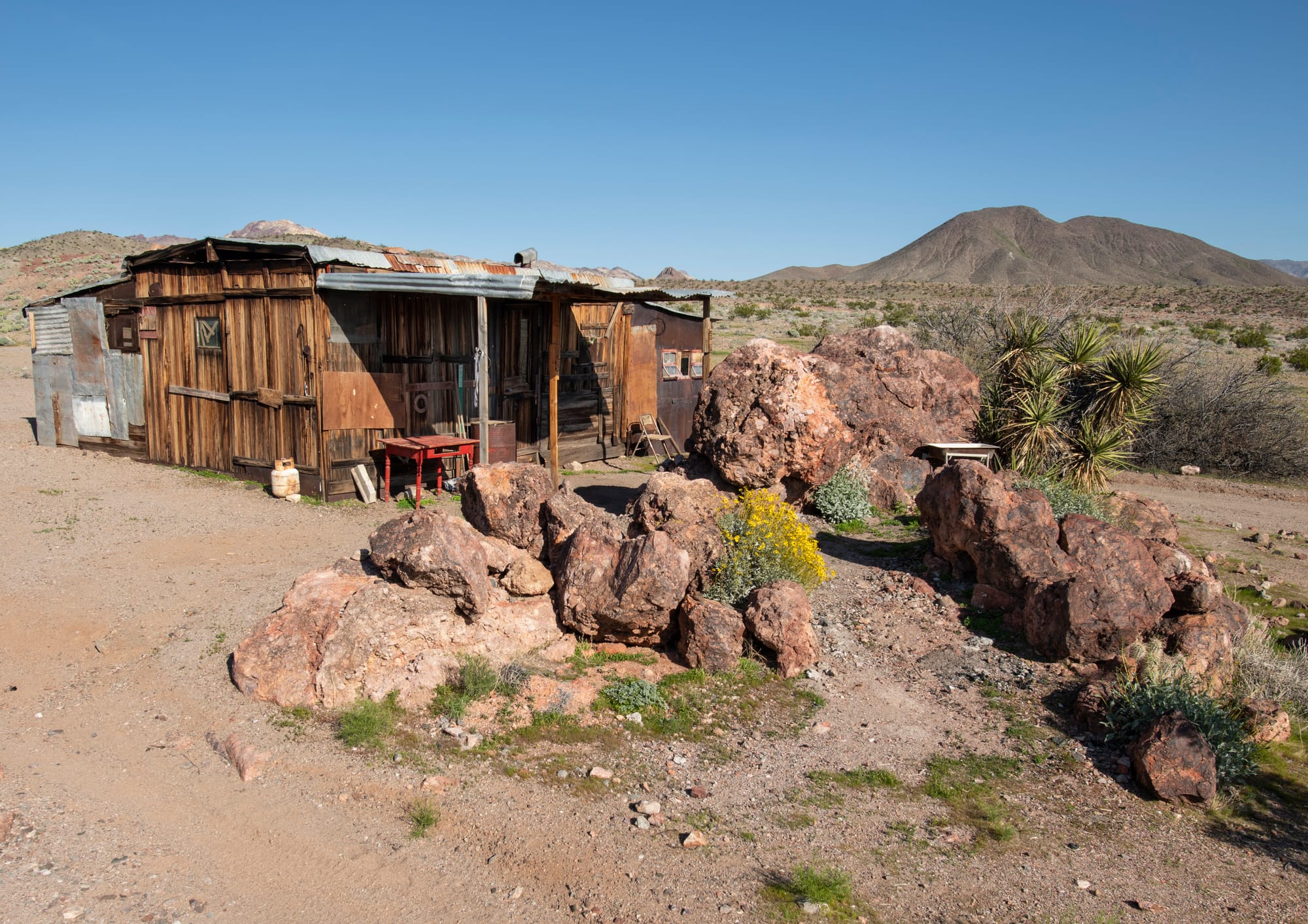In 1886, Albert G. Rhodes and his partner discovered a promising silver deposit in the hills behind the spring that would come to bear his name. They extracted and transported 1,200 pounds of ore, worth approximately $800, before meeting a tragic fate on a return trip to the mine. Rhodes, along with a group of investors, vanished into the vast Mojave Desert somewhere between Daggett and the mine, never to be heard from again. The mystery deepened when Rhodes' cousin, who set out to relocate the lost mine in 1894, also disappeared without a trace.
The mine was forgotten for nearly two decades until the Greenwater boom brought a rush of prospectors to the region. A group rediscovered Rhodes' claim markers and the original mine workings in 1905.
News of the rediscovery sparked a minor rush to the area, with several new claims being staked in 1906. The small mining camp that emerged became known as Rhodes Springs. However, the excitement was short-lived. The financial Panic of 1907 and the realization that the rich ore deposits were isolated pockets led to a rapid decline in mining activity. A brief resurgence occurred in 1908 when a gold deposit valued at $25,000 per ton was discovered, but further exploration revealed it to be another isolated find.
The area remained largely quiet until the 1930s when prospector Lou McGirk filed a location notice for the site. McGirk developed a small cone-crusher mill just up the canyon from the spring and built several structures, including the cabin now known as the Rhodes Well House or Rhodes Spring Cabin. The cabin, constructed and expanded between the 1930s and 1960s, served as a residence for the small-scale mining operations that continued sporadically until the 1950s.

I've been visiting the Rhodes Spring Cabin in the southern part of Death Valley for over twenty years. It has never been the neatest cabin, but it has always been a fun spot to camp when I'm in the area. I don't recommend sleeping inside, but it makes a decent place to escape the wind. The wood-burning stove has kept us warm on many chilly nights while we pondered the fate of Albert Rhodes and his ill-fated expedition.
My photos are from 2004, 2006, 2008, 2014, 2018, and 2024. They present a bit of a chronological history of the cabin for the last twenty years. The older photos show their age, and, as you can see, many artifacts have come and gone over the years.
Also, see the nearby Salsberry Prospect.



